Today in Our Country there are relatively few breeds of sheep related to the meat direction. There are practically no breeds of only meat direction at all. As a rule, breeds that can give a good slaughter yield of meat are either meat-fat or meat-wool directions. The semi-fine-wool breed of the Kuibyshev sheep is also reckoned to the latter.
The breeding of the Kuibyshev breed began in the second half of the 30s of the XX century. This breed was bred in the Kuibyshev region by crossing Romney March rams and Cherkasy ewes with further breeding of crossbreeds in themselves. Work on the breed lasted from 1936 to 1948. As a result, a sheep was obtained, capable of producing relatively high quality wool and a fairly high percentage of meat from the carcass.
Breed Standard
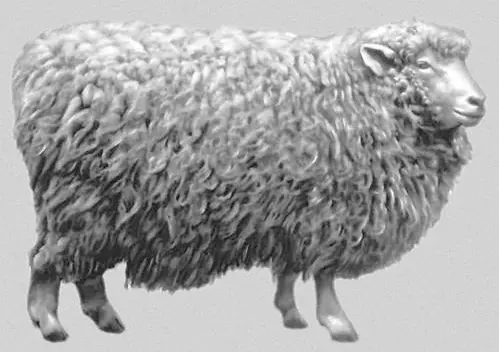
Kuibyshev sheep are large animals with a massive skeleton. The constitution is strong. Legs of medium length, strong, with the correct setting.
The head is broad, characterized by overgrown rune to the line of the eyes. Horns are absent.
The body is long, barrel-shaped. The back, loin and sacrum are wide. The top line of the body is straight. In general, the shape of the body corresponds to the characteristics of the meat breed. The chest is deep and wide. The tail is docked.
The weight of rams is on average 102 kg, ewes 72 kg. The slaughter yield of meat is from 52 to 55%. 8-9-month-old young animals give up to 39 kg of meat.
The breed has good coat characteristics. Shearing from a ram is 5,5 kg, from an ewe 4,1 kg. Net yield of wool 55±1%. The wool is of good quality, it is uniform, the fineness is 46-56 qualities and is located just in the middle of the line that determines the fineness quality.
It is often said about Kuibyshev sheep that they look like a ball of wool. The description of the breed according to the standard corresponds to this figurative comparison. The Kuibyshev breed of sheep is distinguished by a significant overgrowth of the legs, although it is inferior in this respect to the Merino sheep breeds. According to the standard, the coat should reach to the carpal joint on the front legs and to the hock on the hind legs.
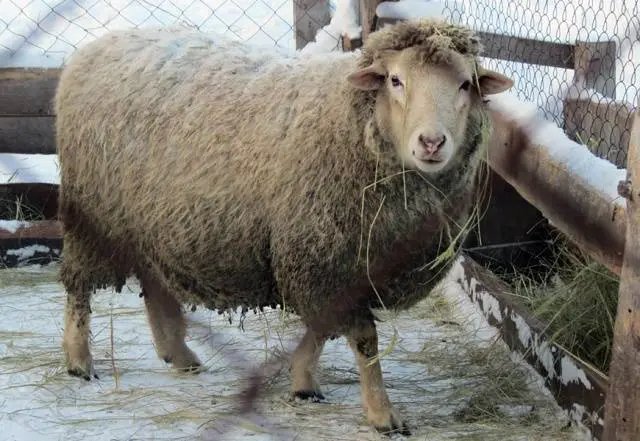
A year after the last haircut, the wool of this breed should be at least 11 cm long. The length of 15 cm is considered optimal. In the Kuibyshev young growth of one year old, the length of the wool reaches 12 cm.
The minus of almost all sheep is constantly dirty wool due to the fact that dirt and manure stick to it when the flock is kept in a fairly cramped room, and the grease secreted by the skin also lingers. If the Kuibyshev sheep is washed, it will be found that a pleasant color with a bluish tint will be added to the standard characteristics of its wool.
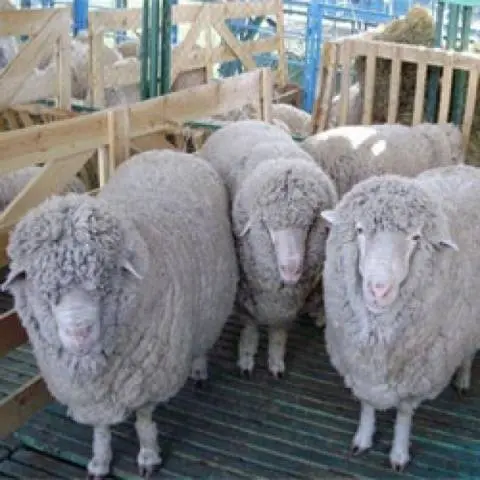
Sheep of the Kuibyshev breed at the All- Sheep Show in Elista:
Content
The Kuibyshev breed of sheep is adapted to life in the sharply continental climate of the Volga steppe region. It tolerates winters well and does not need a warm room for wintering. The main requirement: dry bedding and no gaps in the barn. This breed also tolerates summer heat no less well, which is especially important because these sheep belong to the group of semi-fine-fleeced.
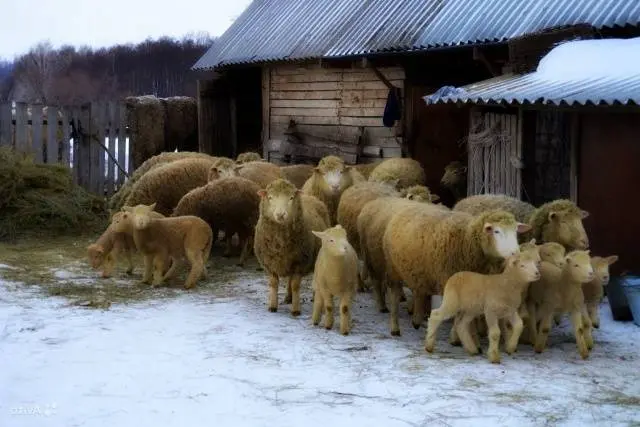
Sheep have strong hooves that need either natural grinding during long-term grazing on hard rocky ground, or regular trimming of the regrown hoof horn. Hooves are trimmed every 6 to 8 weeks. Otherwise, the hooves grow, turning into “skis”, and prevent the sheep from walking. The result is usually lameness.
Diet and feeding
In the first place, like any herbivores, in the diet of sheep is hay or fresh grass. Lactating ewes are best fed ad libitum, without limiting their need for hay. During lactation, the body of the uterus depletes its resources, the animal becomes very thin, even receiving the maximum possible amount of food. For this reason, even those ewes that can bring lambs at any time of the year are not recommended to happen more than once a year. The body must have time to recover, and the uterus to fatten. Single animals, young animals and rams-producers are given hay at the rate of 2-4 kg per day.

In addition to hay, sheep are provided with juicy fodder: fodder beet, pumpkin, zucchini, carrots. Succulent feed improves the digestibility of roughage, which, along with straw and chaff, includes hay.
In the case of giving animals straw instead of hay, one should try to provide them with succulent feed and concentrates, since straw contains practically no nutrients. The best types of straw are: legume, oat, barley and millet straw.
Also in the diet of sheep include mineral supplements: salt, fodder chalk, bone and meat-and-bone meal, and vitamins. These components are especially important if the animals receive straw instead of hay.
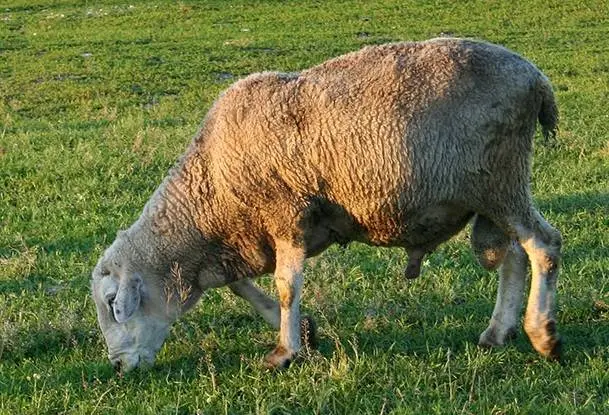
In summer, flocks try to graze on the grass. At this time, you can reduce vitamin supplements, leaving salt and minerals in the diet.
Breeding
Kuibyshev sheep are not distinguished by high fertility. The number of lambs per hundred ewes is 130 – 145 heads. Due to the infertility of ewes, the lambs of this breed gain weight well and grow stronger than their counterparts of other breeds, bringing 2-3 lambs per lamb.

Most breeds of sheep are seasonal in breeding, bringing lambs in the spring. Ewes often happen in August – September, with the expectation that the lambs will be born in the spring, when the green grass appears. In the more northern regions, sheep are better to happen later, since the grass appears later there. In particular, the manifesto of Peter the Great contained a requirement to launch sheep into the flock only from October 26th. Therefore, sheep owners will have to independently regulate the time of mating. In the southern regions, ewes should happen earlier so that the lambs have time to eat the grass before it burns out. In the northern ones later, so that the lambs do not have to spend a long time in a dark and cramped barn instead of a pasture.
Sheep hunting lasts 38 hours. That is why during the mating period, the ram must constantly be in the flock. He definitely doesn’t miss. For one ram, 60 ewes can be determined. If insemination did not occur, the sheep again comes into hunting after 17 ± 1 days.
It is important not to overfeed the ewes, as this will reduce their fertility. Obese rams are also not of high quality semen. It is also impossible to starve animals, ewes in poor condition often remain barren.
Conclusion
The Kuibyshev sheep is beneficial in that it is possible to obtain not only traditional wool, and of rather high quality, but also a significant amount of tasty meat. In addition, this breed gives strong, disease-resistant offspring. When selecting a sheep breed suitable both for obtaining high-quality wool and for meat, owners of personal farmsteads should pay attention to the time-tested Kuibyshev breed.









